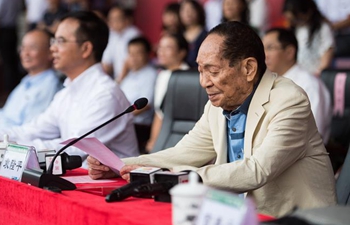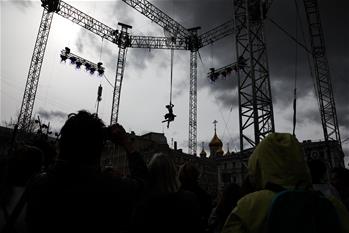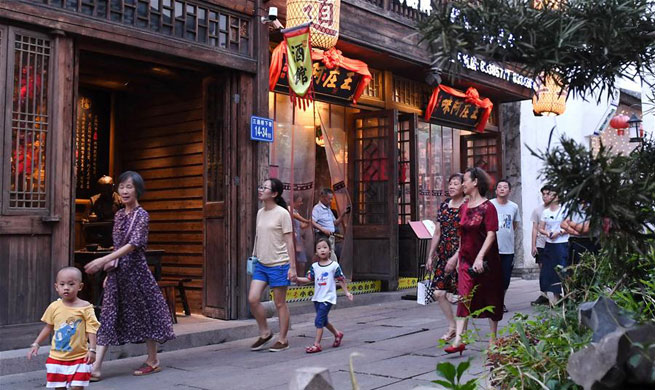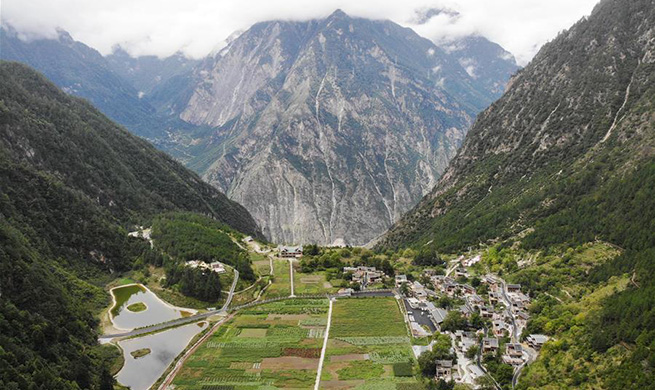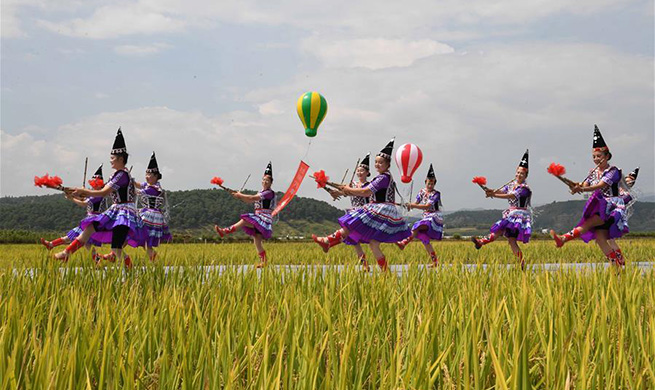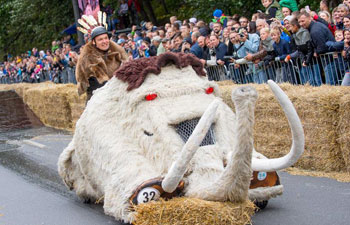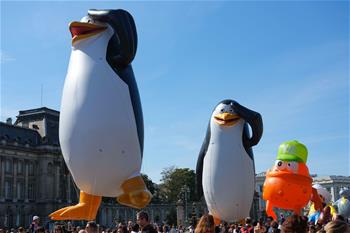by Xinhua writer Song Rui
TIANJIN, Sept. 16 (Xinhua) -- A total of 27 actors and actresses stood in two rows on a stage in front of a background of the Chinese characters for "munitions warehouse."
Click! Their appearances were captured in a black-and-white photo taken on Oct. 1, 1949, when the People's Republic of China was founded.
The photo is treasured by Liu Zhimin, a photo collector in north China's Tianjin Municipality who has collected nearly 40,000 old photos from all over the country over the past years.
"I collected several historic old pictures from one of my friends. They were taken on Oct. 1, 1949, a big day for all Chinese people," the 57-year-old said.
A photo is a unique portrait of time and place, and the camera lens can record the ever-happening changes and progresses in China, Liu said.
In the 1950s and 1960s, most Chinese people dressed in simple garments with monotone colors, such as black, white and dark blue. Girls loved braided hair, while boys were fond of wearing army caps. Each person held a small book as a prop when taking photos and would hold it in front of their chests.
"In the era with limited resources, the style of photography was relatively simple. Taking a photo was a luxury for most people, who merely had photos taken for important moments such as weddings, graduations and birthday parties," Liu said.
In the winter of 1977, Liu, together with five classmates and their math teacher, rode bikes to a nearby town 10 km away from his home and took his first photo upon graduating from junior high school.
In a gray coat, Liu sat straight and gazed at the lens, grinning and showing his ivory-white teeth. "We each printed several one-inch photos, wrote our names and words of blessing on the back, and gave them to some classmates," he recalled.
Since the country started the reform and opening up in 1978, tremendous changes have taken place and people's living standards have improved. In addition, cameras gradually became accessible to more families.
Wang Xiuping, a citizen from Taiyuan, capital of northern China's Shanxi Province, shared an old picture of her daughter's birthday taken in 1990 on China's microblog service Weibo.
In the photo, a TV, an old lamp and a dressing table were the background. With a red dot on her forehead and pink hair band on her head, Wang's daughter ate a cake on a plastic plate happily with cream on her mouth.
At that time, more Western elements, such as birthday cakes, Western-style suits and wedding dress, as well as Ronald McDonald statues, appeared in more photos.
Liu said the old photos are evidence of great changes in China. Old bikes have been replaced by fashionable cars, and the small cottages have been replaced by high-rise buildings. "All of them reflect that the Chinese people are living a better life."
Now, people like to take pictures to record their lives. There may be hundreds or even thousands of photos on one's smartphone. Some photo studios for tailor-made wedding photos, passport photos and art photography have also gained popularity.
In a shop for passport photos in Tianjin, a staff member was busy selecting a suitable shirt from rows of clothes for a customer.
"We break the rules of wearing white or black shirts for taking a passport photo and add elements of floral, plaid and striped patterns on the clothes to make people look younger and stylish," said Zhao Peng, the shop manager.
Photos will be directly uploaded to the database and professional retouchers will beautify them immediately. The customer can take the finished photos home in about two hours.
"Our model has attracted many young and even some elderly clients. Our oldest client was an 88-year-old woman," Zhao said.
Liu hopes to open an exhibition to the public. "It will be a place to seek cherished memories, and the miracles of China can be known by more generations."




